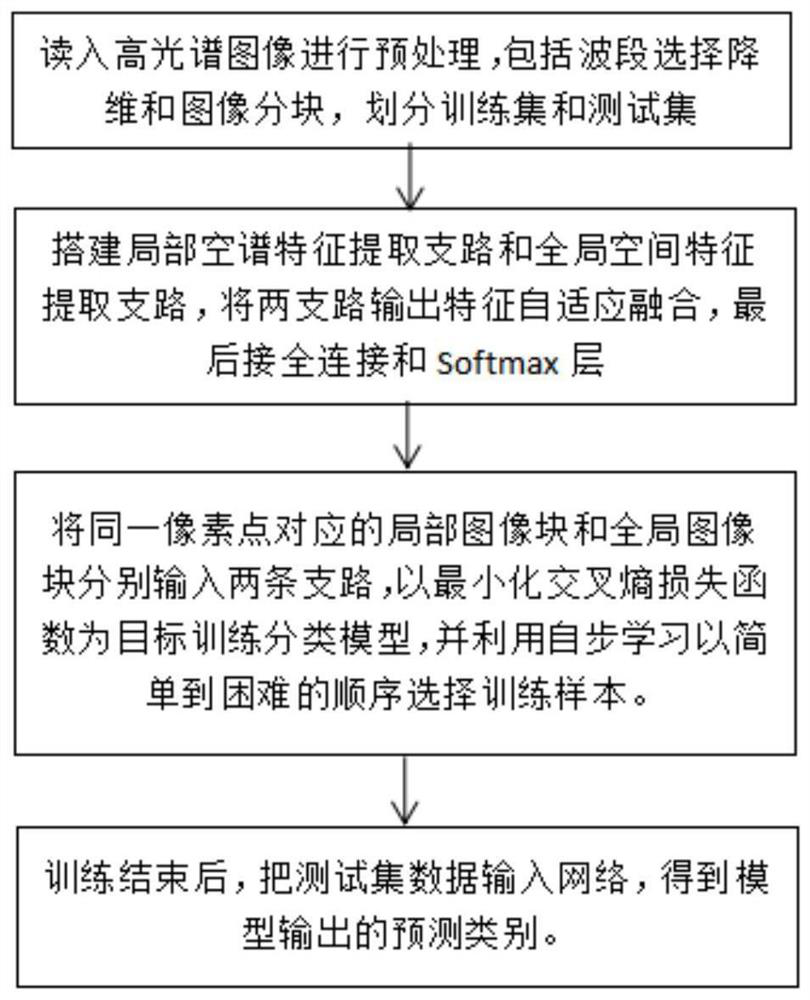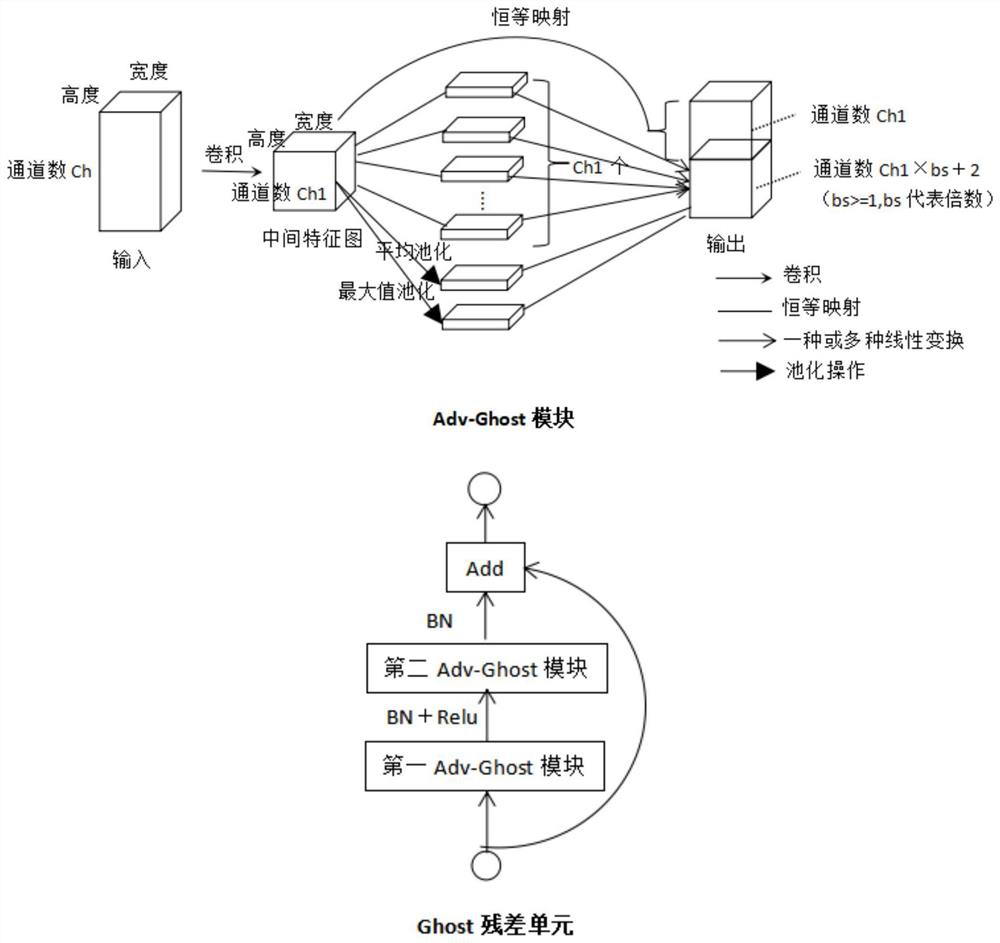Hyperspectral image classification method based on self-paced learning double-flow multi-scale dense connection network
A hyperspectral image and densely connected technology, which is applied in the field of hyperspectral image classification based on self-paced learning two-stream multi-scale densely connected network, can solve the problems that the spatial resolution of image blocks should not be too large, time-consuming, and huge training data. Achieve the effect of reducing spectral feature redundancy, improving extraction effect, and removing spectral redundancy
- Summary
- Abstract
- Description
- Claims
- Application Information
AI Technical Summary
Problems solved by technology
Method used
Image
Examples
Embodiment
[0095] Such as figure 1 As shown, the specific implementation steps of the hyperspectral image classification method based on the self-paced learning dual-stream multi-scale densely connected network of the present invention are as follows:
[0096] 1a. Read in the hyperspectral image X with dimensions W×H×C 0 , where W, H, and C represent the width, height, and spectral dimension of the hyperspectral image, respectively, and there are K categories of pixels in total.
[0097] Perform unsupervised band selection and dimensionality reduction on the hyperspectral image to obtain C2 important band images, and the hyperspectral image after dimensionality reduction X 1 The dimension is W×H×C2.
[0098] Let D KL (i, j) is the K-L divergence of the j-th band of the hyperspectral image relative to the i-th band, O(i, j) is the Euclidean distance between the j-th band of the hyperspectral image and the i-th band image matrix, A(i,j) is the comprehensive difference value, the formul...
PUM
 Login to View More
Login to View More Abstract
Description
Claims
Application Information
 Login to View More
Login to View More - R&D
- Intellectual Property
- Life Sciences
- Materials
- Tech Scout
- Unparalleled Data Quality
- Higher Quality Content
- 60% Fewer Hallucinations
Browse by: Latest US Patents, China's latest patents, Technical Efficacy Thesaurus, Application Domain, Technology Topic, Popular Technical Reports.
© 2025 PatSnap. All rights reserved.Legal|Privacy policy|Modern Slavery Act Transparency Statement|Sitemap|About US| Contact US: help@patsnap.com



